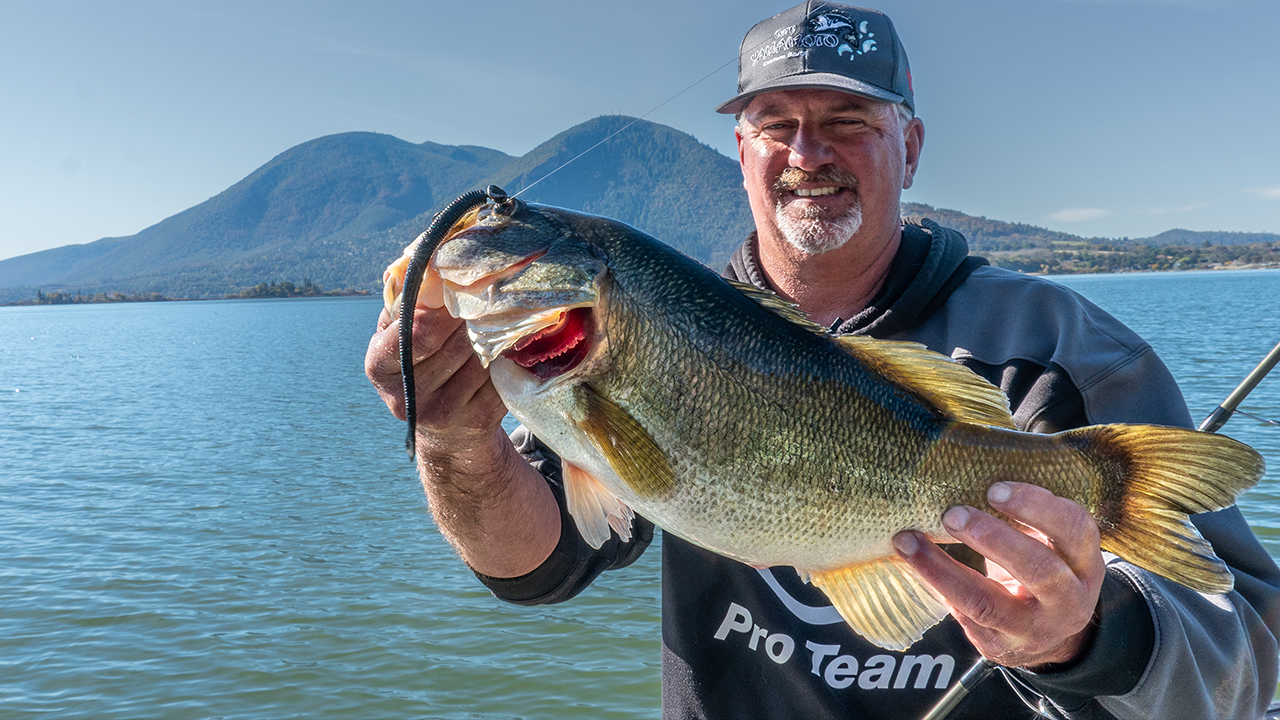Hailing from California’s famed Clear Lake, pro angler Jimmy Reese knows a thing or two about catching pressured bass. And despite a plethora of newer finesse presentations, Reese still relies on the shaky head worm for its consistent fish-catching ability. He shares several pointers on how to fish and rig the simple jig and worm combo to mop up on fish that have passed on faster-moving lures.
TACKLE USED
- WORM – Yamamoto Kut Tail Worm, 5-inch
- JIG – Frenzy Baits Nail Shaky Heads, 3/16- or 1/4-ounce
- ROD – Douglas Outdoors DXS XMatrix Spinning Rod, 7’2 Medium
- REEL – Shimano Sahara FI 2500 Spinning Reel
- LINE (mainline) – Yo-Zuri Superbraid, 30-pound
- LINE (leader) – Yo-Zuri T7 Fluorocarbon, 8- to 12-pound
Regardless of fishing pressure, there’s almost always a percentage of the bass population unwilling to chase moving baits. As Reese notes, bass often focus feeding on slow-moving forage such as crawfish. While you can pluck some quality fish with moving baits like swinging jigs and crankbaits, you’ll score additional fish by working a shaky head slowly and methodically through productive areas.
Reese breaks down his rod, reel, and line setup for shaky head fishing, which needs to provide a blend of finesse and strength to detect bites (without being felt) and backbone for driving hooks and controlling the fish. He then discusses jig head selection and how to Texas rig your worms so you can fish the bait through a variety of bottoms with minimal fouling.












